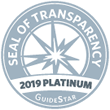
CLINICAL THYROIDOLOGY FOR THE PUBLIC
A publication of the American Thyroid Association
Table of Contents
EDITOR’S COMMENTS
Welcome to another issue of Clinical Thyroidology for the Public. In this journal, we will bring to you the most up-to-date, cutting edge thyroid research. We will be providing summaries of research studies that were discussed in a recent issue of Clinical Thyroidology, a publication of the American Thyroid Association for physicians. These summaries are presented in lay language to allow the rapid dissemination of thyroid research to the widest possible audience. This means that you are getting the latest information on thyroid research and treatment almost as soon as your physicians. As always, we are happy to entertain any suggestions to improve Clinical Thyroidology for the Public so let us know what you want to see.
We also provide even faster updates of late-breaking thyroid news through Twitter at @thyroidfriends and on Facebook. Our goal is to provide patients with the tools to be the most informed thyroid patient in the waiting room.
Also check out our friends in the ATA Alliance for Thyroid Patient Education. The Alliance member groups consist of: the American Thyroid Association, the Graves’ Disease and Thyroid Foundation, the Light of Life Foundation, ThyCa: Thyroid Cancer Survivors Association, Thyroid Cancer Canada and Thyroid Federation International.
June is Differentiated Thyroid Cancer Month.
In this issue, the studies ask the following questions:
- Is fluoridated drinking water associated with a higher prevalence of hypothyroidism?
- Does iron deficiency cause low T4 levels during pregnancy?
- What medications interfere with the effectiveness of levothyroxine?
- Is there a risk of thyroid cancer as a result of exposure to CT scans?
- Does iodinated contrast given with xrays affect thyroid function?
- Can a new ultrasound technique replace the need for biopsy in certain thyroid nodules?
We welcome your feedback and suggestions. Let us know what you want to see in this publication. I hope you find these summaries interesting and informative.
— Alan P. Farwell, MD


